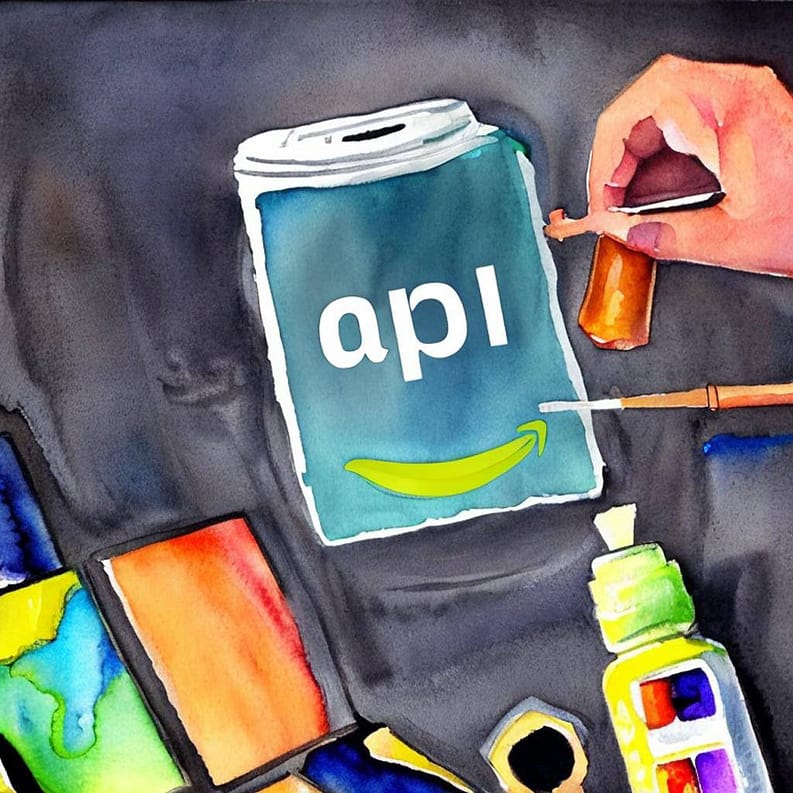
eg. Amazon api for affiliates
I can walk you through an example of using and implementing the Amazon API for affiliates. Please note that the specifics of the implementation may vary depending on the programming language or framework you are using. In this example, we’ll use Python.
Step 1: Get Access Key and Secret Key
To access the Amazon API, you’ll need to sign up for the Amazon Associates program and create an account. Once you have an account, you can generate an Access Key and Secret Key, which will be used for authentication when making API requests.
Step 2: Install Required Libraries
To interact with the Amazon API, we’ll need to install the required libraries. You can install them using pip, the Python package manager. Open your terminal or command prompt and run the following command:
Copy code
pip install requests
Step 3: Make API Requests
Now, let’s see an example of how to make an API request to retrieve product information from Amazon. We’ll use the requests library to send HTTP requests.
python
Copy code
import requests
import hashlib
import hmac
import time
access_key = ‘YOUR_ACCESS_KEY’
secret_key = ‘YOUR_SECRET_KEY’
associate_tag = ‘YOUR_ASSOCIATE_TAG’
# Define the API endpoint
endpoint = ‘https://webservices.amazon.com/onca/xml’
# Define the request parameters
params = {
‘Service’: ‘AWSECommerceService’,
‘Operation’: ‘ItemLookup’,
‘AWSAccessKeyId’: access_key,
‘AssociateTag’: associate_tag,
‘ItemId’: ‘B0000A98AC’, # Example ASIN
‘IdType’: ‘ASIN’,
‘ResponseGroup’: ‘ItemAttributes,Images,Offers’
}
# Generate a timestamp for the request
timestamp = time.strftime(“%Y-%m-%dT%H:%M:%S.000Z”, time.gmtime())
# Sort the request parameters by key
sorted_params = sorted(params.items())
# Create the canonical query string
canonical_query_string = ‘&’.join([f”{k}={v}” for k, v in sorted_params])
# Create the string to sign
string_to_sign = f”GET\nwebservices.amazon.com\n/onca/xml\n{canonical_query_string}”
# Generate the signature
signature = hmac.new(secret_key.encode(), string_to_sign.encode(), hashlib.sha256).hexdigest()
signature = signature.upper()
# Add the signature to the request parameters
params[‘Signature’] = signature
# Add the timestamp to the request parameters
params[‘Timestamp’] = timestamp
# Send the API request
response = requests.get(endpoint, params=params)
# Process the response
if response.status_code == 200:
# Handle the response here (parse XML, extract data, etc.)
print(response.text)
else:
print(f”Request failed with status code: {response.status_code}”)
Make sure to replace ‘YOUR_ACCESS_KEY’, ‘YOUR_SECRET_KEY’, and ‘YOUR_ASSOCIATE_TAG’ with your own credentials.
This example demonstrates how to perform an ItemLookup operation to retrieve information about a specific product using its ASIN. The response will contain details like the product’s title, price, images, and offers.
Please note that the actual implementation might require additional error handling, parsing of XML responses, and other considerations based on your specific use case. You can refer to the Amazon Product Advertising API documentation for more information on available operations and response formats.
Remember to comply with Amazon's API usage guidelines and terms of service while implementing the API in your application.

Thank you for reading and sharing!

Invest in your future & learn
Learn affiliate marketing & build your own website.
Heads up! Make sure you sign up using my referral link to get access to my personal coaching and all features.
👉 Sign Up
Source OpenAI’s ChatGPT Language Model and DALLE – Images Picsart







